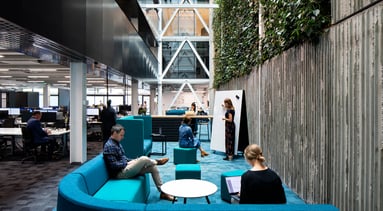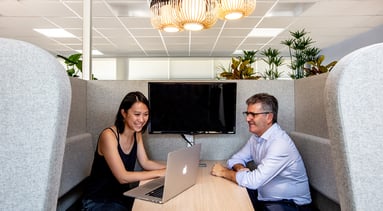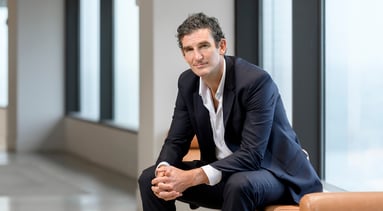
The buoyancy of the Spanish economy is adding dynamism and an experimental edge to the workplace sector, creating opportunities which are focused on innovative workplace design.
With office occupier demand at its strongest level for a decade, space availability is diminishing, and as a result clients are becoming more innovative about how they create spaces, and this is having a wonderful effect on workplace design.
The recession of 2008 hit Spain and Portugal hard, particularly with youth employment reaching daunting levels. However, from this dark period sprang light and with unemployment as high as 25% with 4.5m under work this led to many people starting their own business, and a new entrepreneurial spirit has flourished.
The economy in the eurozone shows a solid recovery during the first months of the year and in particular in Spain whose growth forecasts have risen to 3.1% for 2017 after registering a growth of 0.9% during the second quarter according to data in advance of the Bank of Spain.
The dynamism of the economy in Spain is also reflected in office rents. By the end of 2017 there were over 570,000sqm of space taken in Madrid, growth of 29% compared to prior year, and the highest growth for a decade. The investment in office in Madrid has reached 928M euros and 705M euros in Barcelona – record levels. In Barcelona, the amount of leased space in 2017 almost doubled compared to the prior year (+ 46%) and recruitment has been located at levels not reached since the year 2007. *(Source: Knight Frank Research).
The knock-on effect is that space availability has shrunk to less than 10% and clients are having to become adaptable in a competitive market.
What sectors are driving workplace growth?
Like so many of the global cities, market growth is being driven by the tech sector, but this is a new experience for Madrid – 14% of space is now occupied by technology companies and we can only see this trend increasing and perhaps, one day, challenging professional services as the dominant sector.
Tech companies in Spain are benefiting from funding and growth, therefore are actively looking for better buildings. Frequently they prefer to stay in the same area where their old offices were or go to co-working spaces so they are really driving refurbs and fresh approaches to what might have previously been considered out-dated space in unfashionable areas.
Co-working has also become a key solution for start-ups, PYMES, entrepreneurs and self-employees and new companies. Spain has already shown significant growth in co-working now hosting the most flexible space in the world behind the US and the UK.
Click to read our blog on co-working in Spain - our guide to some of the disruptive office design in the market.
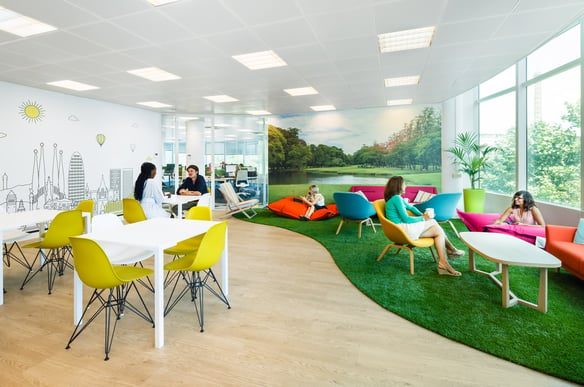 Workplace design case study: Qlik, Barcelona by Unispace
Workplace design case study: Qlik, Barcelona by Unispace
How are market conditions affecting workplace?
This change in market sentiment and attitude to work has seen a new approach to space. Availability of new office space has fallen way and new workspace is being delivered through renovations and refurbishments. In fact, many buildings are close to full occupancy before they are even completed in the major cities.
As a result the growth of co-working has become a key trend – as it has over much of Europe – but there has been a particular Hispanic twist with innovative approaches to space. This has informed design of co-working space but also more conventional clients who are starting to look at space in a new way, to optimise their occupancy.
Clients have been very keen to advise on space – to introduce innovation, technology and smarter ways of working. We have seen global clients such as Airbus look at new, collaborative spaces, confident of the energising effect they can have and quick to empower their workforce. Other corporate brands such as EY and PWC are also looking at new ways of working. There is a definite buzz to the market and for those of us within it – our perspectives are lifting.
Rohan Silva, owner of the Second Home co-working chain has just set up in Lisbon and said:
“It reminds me of east London in 2010, before the Tech City explosion. There is energy, creativity and a real mix of businesses, from venture capitalists to film-makers, fashion designers and creative agencies. It’s much more than just tech.”
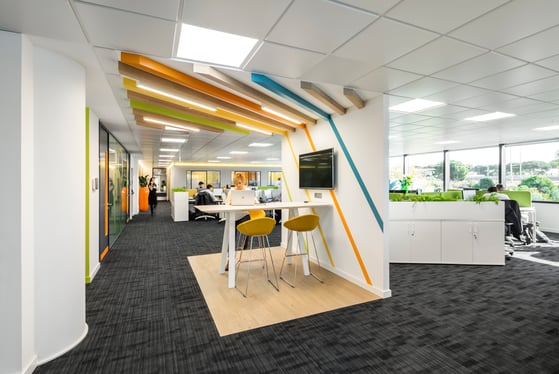 Workplace design case study: Qlik, Madrid by Unispace
Workplace design case study: Qlik, Madrid by Unispace
Five key trends for Spanish workplace
- Innovation – the new EY offices in Madrid are founded on the activity-based model, with a range of different space for working and socialising. Again there is a strong emphasis on ideation and bringing the workforce together while offering them choice of location and work mode.
- A new way of doing business has fed through to a new form of designing office space – there is very much a strategy founded on “the way we work will define where we need to work.” Firms are no longer concerned with location for location’s sake – this is all about brave choices and making the best decision for the firm, business strategy and not being dictated to by lease lengths and available space.
- This fresh approach is, in part, being driven by a new manifesto from workers for whom salary and job status are no longer the key elements for staff attraction and retention. Workers in Madrid now look at the location of the company they want to work at, with the social benefits and work/life balance it offers them as a key basis for decision-making.
- Businesses are encouraging new ways of working – both inside the office and via teleworking – but it is all about empowering workers and giving them more confidence.
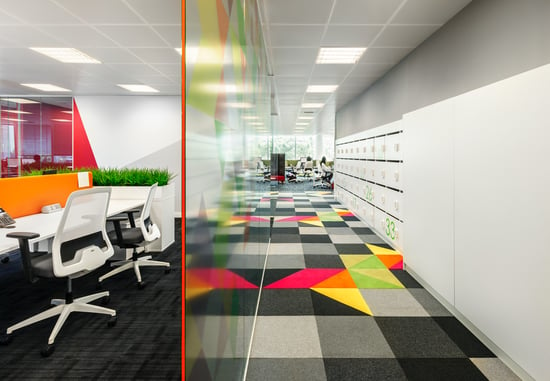 Workplace design case study: Qlik, Barcelona by Unispace
Workplace design case study: Qlik, Barcelona by Unispace
How is this affecting workplace design?
- The war for talent is a #1 priority for nearly all businesses in Spain so office design and the creation of space is viewed is key to creating a competitive strength.
- From the worker’s perspective, they are bringing a new emphasis on well-being, for example spaces and time for yoga and meditation or the ease of access to gyms or outdoor space.
- Collaboration and community-based spaces – there is so much emphasis on network building, personal development through relationship building. So much of this is generated via design and there is a real confidence to occupiers and operators of flexible space in trying to inspire collaboration. For example, an old cinema club in downtown Madrid has been turned into a mixed-used culture hub, with a strong emphasis on idea generation and mixing up the user base.
- Greater efficiency through the use of better materials that address an environmentally-aware approach, space optimization with less consumption and more interaction with teams and clients.
- Closely monitoring effectiveness, and using data to assess the right use of spaces (to spend time with people and make salaries more productive, not loss productive, finding space to allow workers to concentrate and to do their jobs efficiently).
